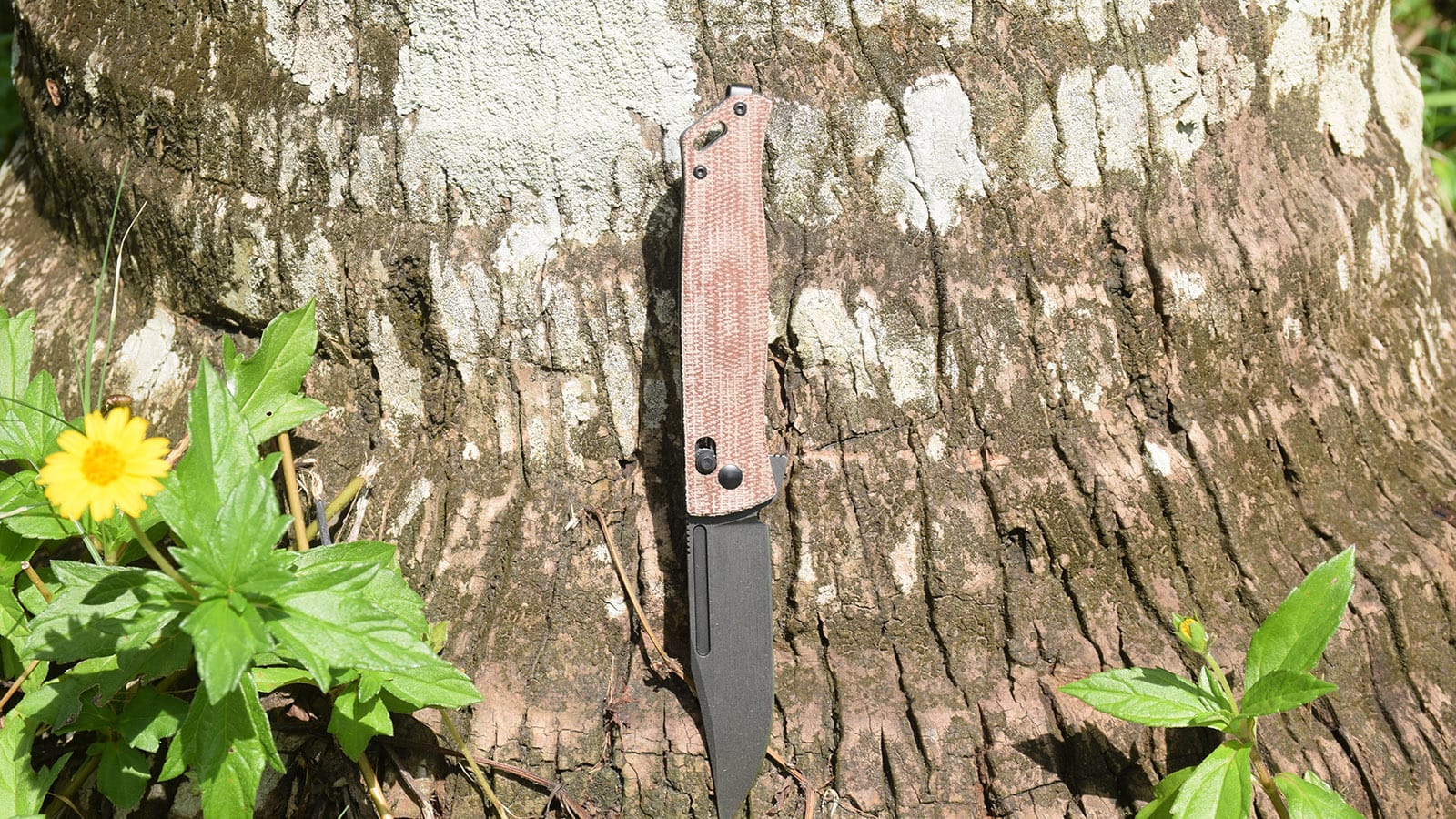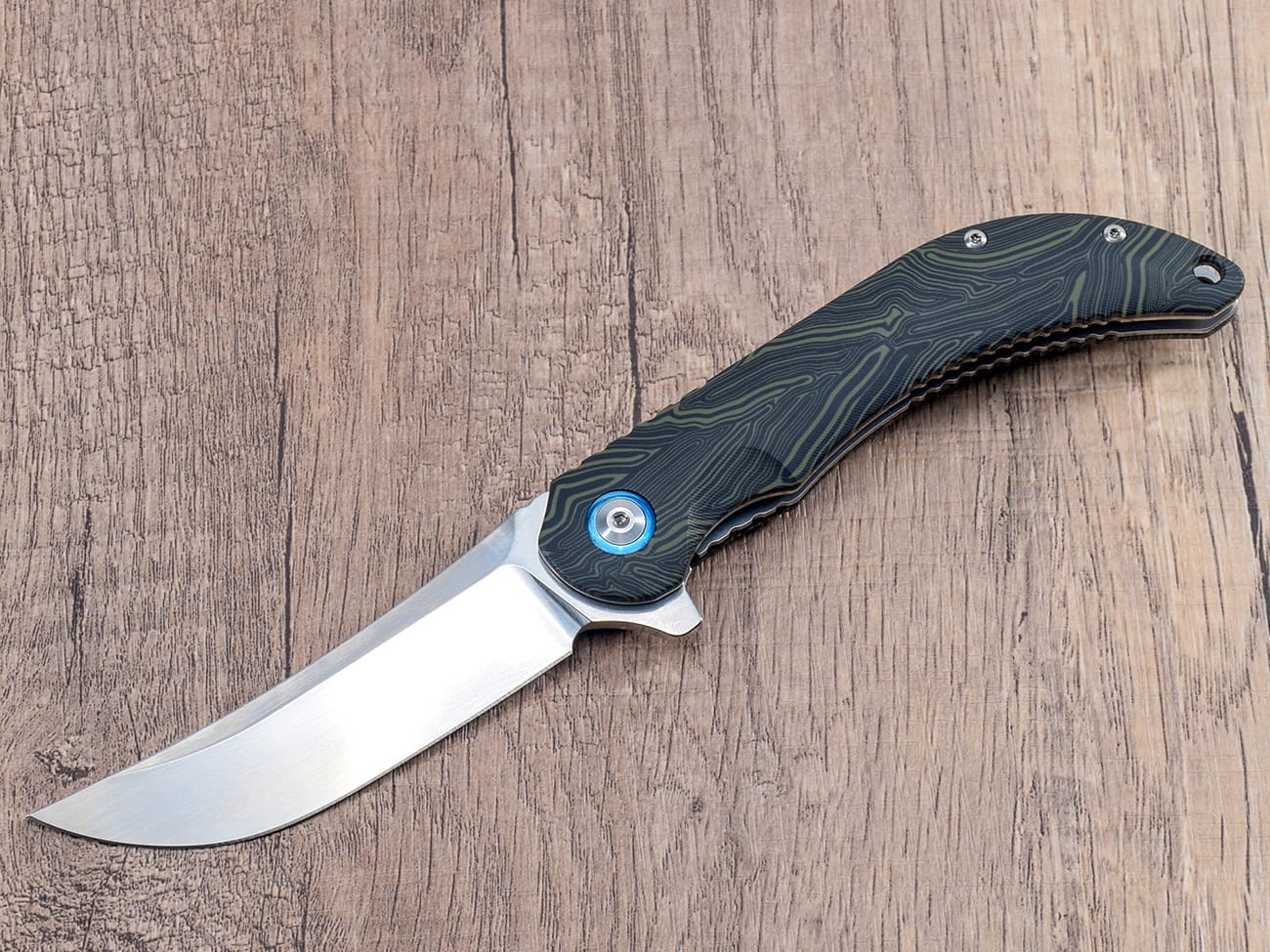Er du en kniventusiast på udkig efter det perfekte håndtagsmateriale til din næste klinge? Se ikke længere! I denne omfattende guide dykker vi dybt ned i Micarta og G10s verden, to af de mest populære og holdbare knivskaftsmaterialer på markedet. Uanset om du er en erfaren samler eller en afslappet bruger, vil forståelsen af forskellene mellem disse materialer hjælpe dig med at træffe en informeret beslutning om dit næste knivkøb. Lad os udforske styrkerne, svaghederne og de unikke egenskaber ved Micarta og G10 for at afgøre, hvilken en der regerer i verden af knivskafter.
Hvad er Micarta og G10?
Før vi dykker ned i sammenligningen, lad os først forstå, hvad Micarta og G10 faktisk er. Begge materialer er kompositmaterialer, der bruges i knivskafter, men de har nogle vigtige forskelle i deres sammensætning og fremstillingsproces.
Hvad er Micarta?
Micarta er et kompositmateriale fremstillet af lag af stof eller papir, der er gennemblødt i phenolharpiks og derefter komprimeret under højt tryk og varme. Denne proces skaber et tæt, holdbart materiale, der er modstandsdygtigt over for fugt, kemikalier og slid. Micarta kan fremstilles af forskellige basismaterialer, herunder linned, lærred og papir, hvilket resulterer i forskellige teksturer og udseende.
Hvad er G10?
G10 er derimod et højtryksfiberlaminat. Den er lavet ved at stable flere lag glasfiberklud, gennembløde dem i epoxyharpiks og derefter komprimere dem under højt tryk og varme. Resultatet er et stærkt, let og vandafvisende materiale, der er populært i knivskafter og andre applikationer.
Hvordan er Micarta og G10 lavet?
Forståelse af fremstillingsprocessen for disse materialer kan hjælpe dig med at værdsætte deres unikke egenskaber og forskelle.
Micarta-fremstillingsprocessen
- Stof- eller papirark vælges som basismateriale.
- Disse plader er gennemblødt i phenolharpiks.
- De gennemblødte plader stables i lag.
- Stakken udsættes derefter for højt tryk og varme.
- Denne proces binder lagene sammen, hvilket skaber et solidt, tæt materiale.
G10-fremstillingsprocessen
- Glasfiberdug er valgt som basismateriale.
- Kluden er gennemblødt i epoxyharpiks.
- Flere lag af den harpiks-gennemblødte klud er stablet.
- Stakken komprimeres under højt tryk og varme.
- Denne proces skaber et solidt, ikke-porøst materiale.
Hvad er de vigtigste forskelle mellem Micarta og G10?
Nu hvor vi forstår det grundlæggende, lad os dykke ned i de vigtigste forskelle mellem disse to populære knivskaftsmaterialer.
Tekstur og greb
En af de mest bemærkelsesværdige forskelle mellem Micarta og G10 er deres tekstur og grebsegenskaber.Micarta:
- Har typisk en mere organisk, naturlig følelse
- Bliver let gribende, når den er våd
- Fås i forskellige teksturer afhængigt af det anvendte basismateriale
G10:
- Generelt glattere og mere ensartet i konsistensen
- Kan bearbejdes eller tekstureres for forbedret greb
- Bevarer sin tekstur under våde forhold
Holdbarhed og styrke
Begge materialer er kendt for deres holdbarhed, men de har nogle forskelle i deres styrkeegenskaber.Micarta:
- Ekstremt holdbar og modstandsdygtig over for slid
- Mindre tilbøjelig til at flække eller revne
- Lidt mere fleksibel end G10
G10:
- Meget stærk og stiv
- Fremragende slagfasthed
- Kan være mere tilbøjelig til at skrabe, hvis den udsættes for ekstrem kraft
Udseende og tilpasning
Udseendet og tilpasningsmulighederne for disse materialer kan i høj grad påvirke en knivs samlede æstetik.Micarta:
- Fås i en bred vifte af farver og mønstre
- Kan have et mere naturligt, organisk udseende
- Udvikler ofte en patina over tid, hvilket giver den karakter
G10:
- Fås i forskellige farver, men har typisk et mere ensartet udseende
- Kan nemt farves eller males til tilpasning
- Bevarer sit udseende over tid uden at udvikle patina
Vandmodstand
Begge materialer fungerer godt under våde forhold, men der er nogle forskelle at overveje.Micarta:
- Vandafvisende, men kan absorbere en del fugt med tiden
- Giver et bedre greb, når det er vådt
- Kan kræve lejlighedsvis vedligeholdelse for at forhindre vandabsorption
G10:
- Meget vandafvisende og ikke-porøs
- Absorberer ikke vand, hvilket gør den ideel til marine miljøer
- Kræver minimal vedligeholdelse under våde forhold
Varmemodstand
Når det kommer til varmebestandighed, klarer begge materialer sig godt, men der er nogle forskelle.Micarta:
- Fremragende varmebestandighed
- Kan modstå høje temperaturer uden at deformeres
- Kan misfarves lidt under ekstrem varme
G10:
- Meget god varmebestandighed
- Bevarer sin form og egenskaber ved høje temperaturer
- Mindre tilbøjelige til at blive misfarvet under varmepåvirkning
Hvilket materiale er bedre til knivhåndtag?
Valget mellem Micarta og G10 kommer ofte ned til personlige præferencer og specifikke behov. Lad os nedbryde nogle scenarier, hvor det ene materiale kan være at foretrække frem for det andet.
Hvornår skal du vælge Micarta
- Hvis du foretrækker en mere naturlig, organisk følelse i dit knivskaft
- Når du ønsker et håndtag, der udvikler karakter og patina over tid
- Hvis du leder efter et lidt mere fleksibelt og stødabsorberende materiale
- Når du ønsker fremragende greb i både tørre og våde forhold
Hvornår skal man vælge G10
- Hvis du foretrækker et mere ensartet og ensartet udseende
- Når du har brug for et meget vandafvisende materiale til marine eller våde miljøer
- Hvis du vil have et håndtagsmateriale, der er nemt at rengøre og vedligeholde
- Når du kræver maksimal stivhed og styrke i dit knivskaft

En tilpasset EDC-kniv med G10-greb, der viser materialets holdbarhed og slanke udseende
Hvordan sammenligner Micarta og G10 sig med andre håndtagsmaterialer?
For at få et bredere perspektiv, lad os sammenligne Micarta og G10 med nogle andre populære materialer til knivskaft.
Micarta og G10 vs træhåndtag
Træhåndtag har været et traditionelt valg til knivskafter i århundreder. Selvom de tilbyder et klassisk udseende og følelse, matcher de generelt ikke holdbarheden og vandtætheden fra Micarta eller G10. Træskafter kan dog give en varmere følelse og unik æstetik, som nogle kniventusiaster foretrækker.
Micarta og G10 vs metalhåndtag
Metalhåndtag, såsom titanium eller rustfrit stål, tilbyder fremragende holdbarhed og et slankt udseende. De kan dog være glatte og kolde at røre ved sammenlignet med Micarta eller G10. Metalhåndtag har også en tendens til at være tungere, hvilket kan påvirke knivens balance.
Micarta og G10 vs Carbon Fiber
Kulfiber håndtag er kendt for deres enestående styrke-til-vægt-forhold og attraktive udseende. Selvom de kan sammenlignes med G10 med hensyn til styrke, er de generelt dyrere og tilbyder muligvis ikke det samme niveau af greb som Micarta eller tekstureret G10.
Sådan plejer du Micarta og G10 knivhåndtag
Korrekt vedligeholdelse kan forlænge levetiden af dit knivskaft og holde det flot. Her er nogle tips til pleje af Micarta- og G10-håndtag:
Vedligeholdelse af Micarta håndtag
- Rengør med mild sæbe og vand
- Tør grundigt efter rengøring eller udsættelse for vand
- Påfør lejlighedsvis et let lag mineralolie for at vedligeholde materialet
- Undgå længere tids udsættelse for skrappe kemikalier eller opløsningsmidler
Pleje af G10 håndtag
- Rengør med vand og sæbe eller et mildt rengøringsmiddel
- Tør helt efter rengøring
- Brug en blød børste til at fjerne snavs fra strukturerede områder
- Undgå at bruge slibende materialer, der kan ridse overfladen
Hvad siger knivfabrikanter om Micarta og G10?
Mange velrenommerede knivfirmaer bruger både Micarta og G10 i deres design. Lad os se på, hvad nogle af dem har at sige om disse materialer.
Spyderco på G10
Spyderco, et velkendt knivfirma, bruger ofte G10 i deres design. De roser dens holdbarhed, styrke og evne til at være let tekstureret for forbedret greb.
ESEE på Micarta
ESEE, kendt for deres robuste udendørsknive, bruger ofte Micarta i deres håndtag. De sætter pris på dets holdbarhed, komfortable greb og evne til at fungere godt under forskellige miljøforhold.
Konklusion: Hvilket materiale regerer?
Efter at have sammenlignet Micarta og G10, er det klart, at begge materialer har deres styrker og er fremragende valg til knivskafter. Det "bedste" materiale afhænger i sidste ende af dine specifikke behov og præferencer. Her er en hurtig oversigt, der hjælper dig med at træffe din beslutning:
- Vælg Micarta, hvis du ønsker:
- En mere naturlig følelse og udseende
- Fremragende greb under våde forhold
- Et håndtag, der udvikler karakter over tid
- Lidt mere fleksibilitet og stødabsorbering
- Vælg G10, hvis du foretrækker:
- Maksimal vandmodstand
- Et ensartet og ensartet udseende
- Nem vedligeholdelse og rengøring
- Ekstrem stivhed og styrke
Uanset hvilket materiale du vælger, vil både Micarta og G10 give dig et holdbart, højtydende knivskaft, der kan modstå belastningen ved daglig brug og udendørs eventyr. Glædelig knivjagt!




